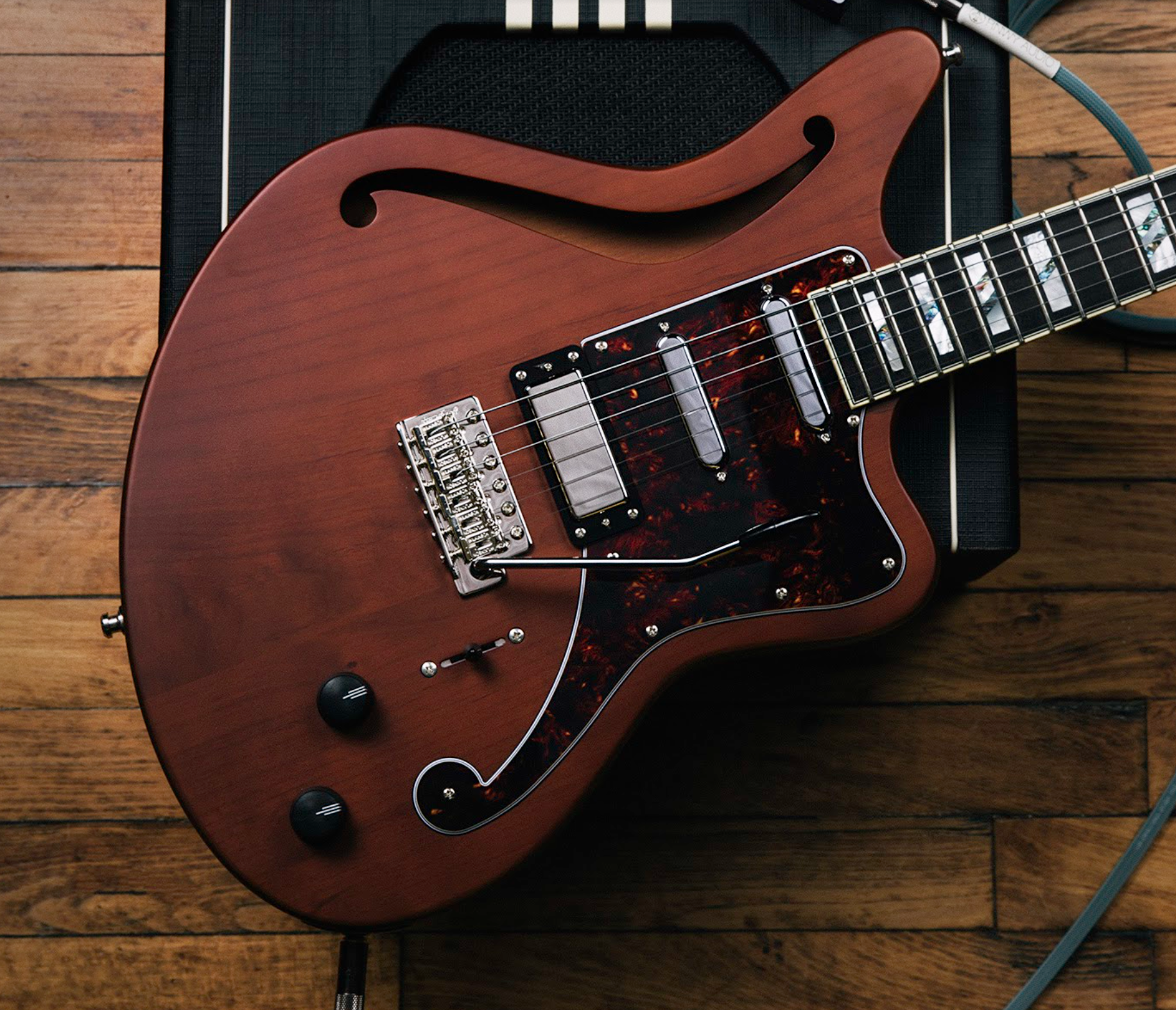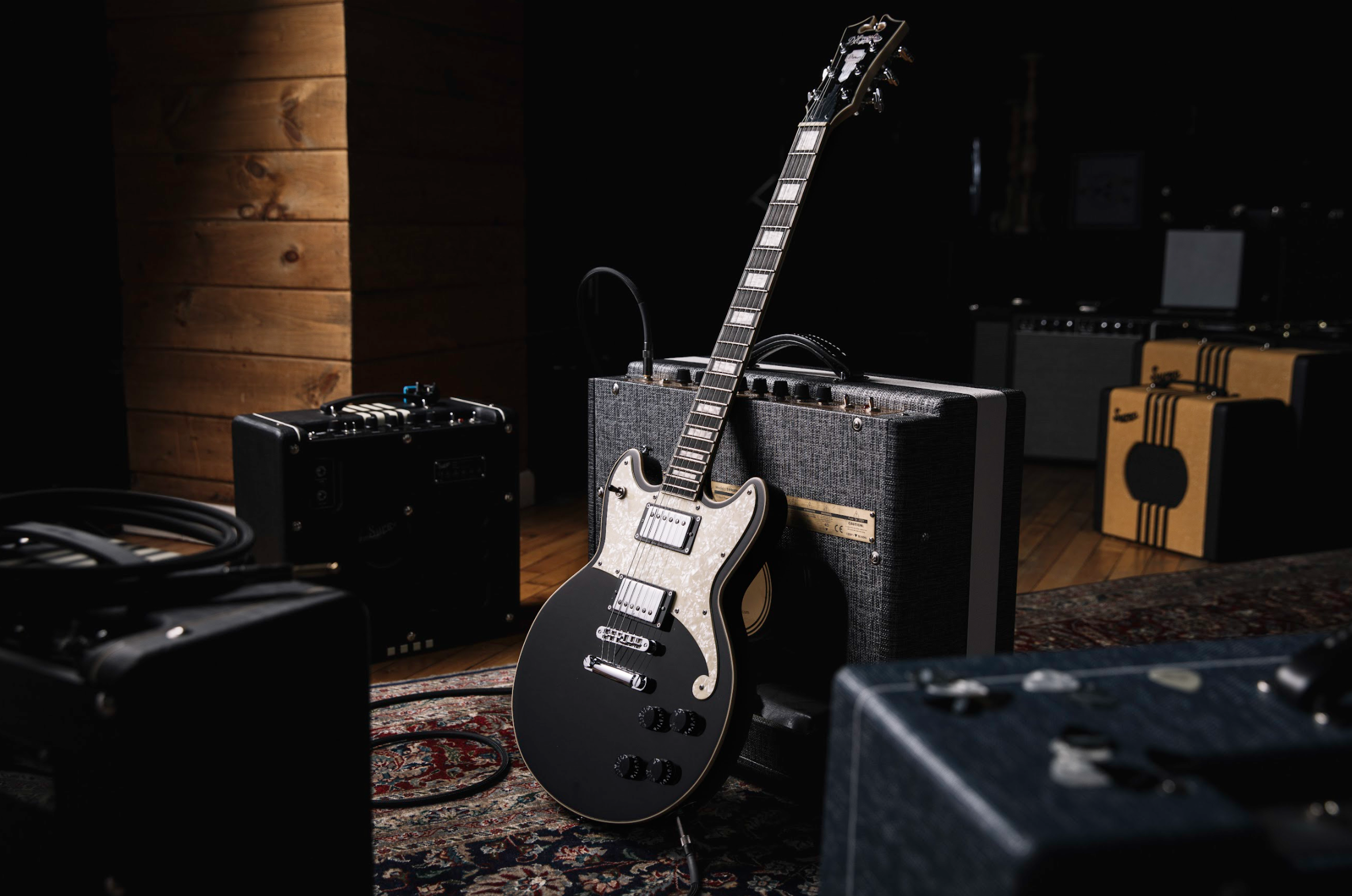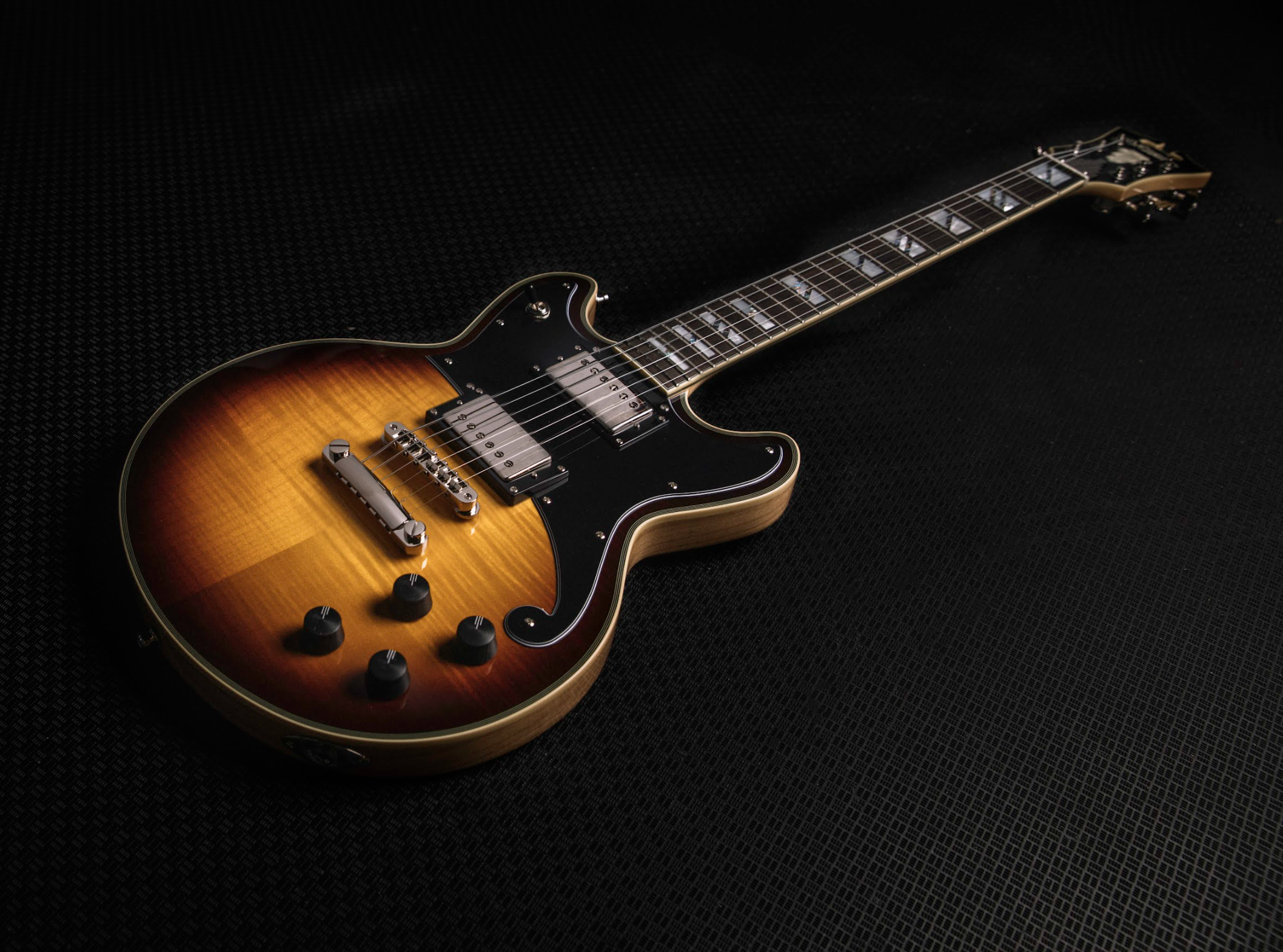Back to blog

Blog
12/16/2021
Wood You Rather: A Comparison of Popular Solid-Body Woods
Every iconic solid-body guitar begins its life the same way—as a simple slab of wood. Since the invention of the electric guitar, many different types of wood have been used across the instrument’s anatomy, with favorites being settled on for bodies, necks, and fingerboards. There is certainly no shortage of intriguing options with different tonal characteristics and aesthetic appeal. Let’s dive into a few of the most common body woods found on solid-body guitars and used across the D’Angelico line.
Alder:
Famous for being featured on some of the earliest Fenders starting in the mid ‘50s, Alder is an extremely popular, widely-used body wood. It is harvested mainly in Europe, Russia and Northwest Africa. It’s usually used for single wood slab-bodied guitars but is occasionally used for laminate guitars as well. So, why is Alder so great?
- Tonally balanced
- Not too bright, not too warm. Sits in the middle of the EQ spectrum.
- Versatile foundational tone, pairs well with any style/genre
- Medium Weight
- Soft, tight pores make for a less dense grain, thus, reducing the weight of your instrument
- Less shoulder ache, but still offers plenty of sustain as a heavier guitar would
- Aesthetically pleasing, large swirling grain
- Medium to dark brown in its natural, dried state
- Demonstrates the strength of the wood
- Accepts semi-transparent finishes as well as fully opaque
Alder bodies are featured on our standard Deluxe Bedford SH, Deluxe Atlantic, and Deluxe Brighton.

Basswood:
Basswood, perhaps the most well-known solid-body wood, is harvested primarily in the USA. Other variants of Basswood are known to grow elsewhere but these are not as commonly used when building guitars. It’s usually white-ish in color, however, it sometimes features unique green mineral streaks. It is beloved by builders and players alike. Here are a few reasons why:
- Very lightweight
- Low in mass; Makes for an instrument that’s easy to wield
- Not particularly porous; Seldom water-logged or over-humid
- Very tight and pronounced mids
- Offers a very “focused” and articulate sound
- No muddy lows or harsh high end
- No prominently visible grain
- It is generally better suited for opaque finishes
- Relatively inexpensive to source
- Ultimately leads to a more affordable instrument
- World renowned guitarists use basswood bodied guitars despite any negative conceptions about its quality
- Easy to work with in the factory
- Can be cut, sanded, and finished more easily than other comparable tonewoods
Basswood bodies can be found in our Premier Series on the Atlantic, Brighton, and Bedford SH.

Swamp Ash:
The most opulent and least common of the three woods discussed so far, Swamp Ash is a unique tone wood with more accentuated characteristics. Also known as Soft Ash, its prevalence in the guitar scene demonstrates its popularity. However, guitars with Swamp Ash bodies are generally more expensive as it is more difficult to find and harvest. You’ll tend to find this body wood on higher-end instruments. Swamp Ash was used on Fender guitars until the mid-50s when it was largely replaced with Alder. Its unique tonal characteristics are a result of Swamp Ash being harvested from trees with roots growing below water level, generally found in swamps of southern USA. It generally appears in a cream-like color. To many players, Swamp Ash deserves all the praise it receives for a variety of reasons:
- Visual appeal
- Beautiful grain
- Dark, swirling, parallel grain lines contrast against the light aesthetic of the wood itself
- Excellent choice for satin and other low opacity finishes, but also accepts opaque finishes nicely
- It’s intricate grain is also well suited for wash finishes
- Beautiful grain
- Bright tonal characteristics
- Scooped mids; Offers a “cutting” bright tone
- Complements pickups with pronounced treble frequencies
- Mini-humbuckers, P90s, and standard single coils in particular
- Excellent sustain
- Despite not being as heavy as guitars known for their sustain, players have not been disappointed
Swamp Ash bodies are featured on the Deluxe Atlantic and Brighton in Vintage Sunburst, complemented by a stunning Flame Maple top.

Mahogany:
Mahogany has proven to be a popular wood for building solid body electric guitars as it is featured on one of the most iconic guitars of all time, the Gibson Les Paul. Les Pauls are known for their Mahogany bodies. Mahogany is a tried and true body wood, also occasionally used for necks. Its distinguished tonal and visual characteristics have kept it at the front of the pack when it comes to tone woods. However, despite its popularity Mahogany is somewhat polarizing and has its pros and cons.
- Quite heavy
- Not always easy on the shoulder, but provides great sustain
- Warm, Dark Tone
- Provides a lot of bottom end, sits further left on the the EQ spectrum
- Unlike the other three woods, Mahogany sits way further toward the warm, rather than bright, end of the tonal spectrum
- Some players find that it provides a tone too warm for their style or genre of choice
- Aesthetically pleasing grain
- Well suited for satin finishes
- Often used on the back and sides of a guitar complemented with a maple top
- Complements burst finishes
Mahogany bodies are available on specific guitars in the Premier Series. You’ll find them on the Premier Atlantic, Brighton, and Bedford SH in Sky Blue.

When choosing an instrument with any of these four body woods, you can’t really go wrong. However, it’s always good to know how the foundation of your guitar will affect its appearance, feel, and tone.
